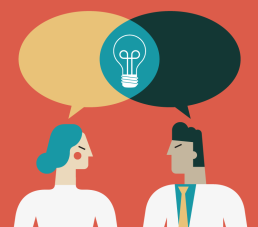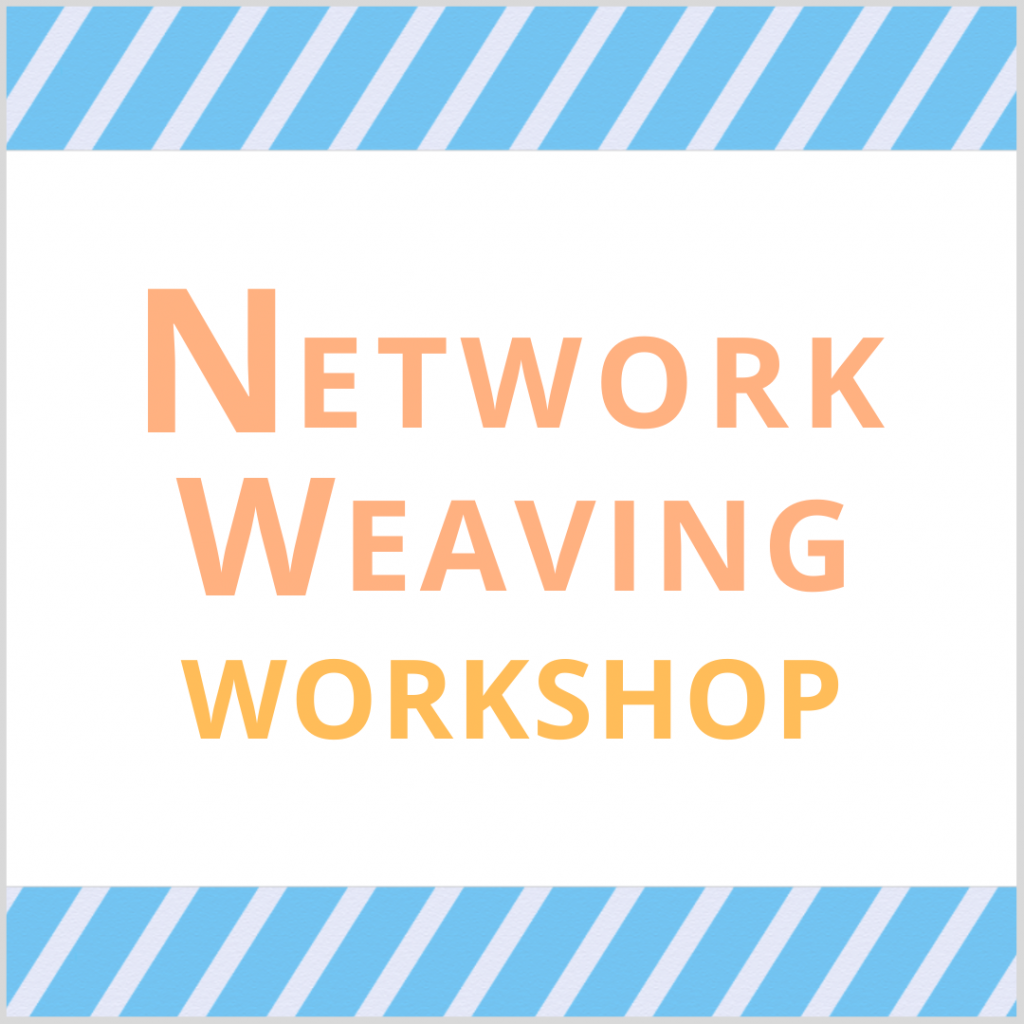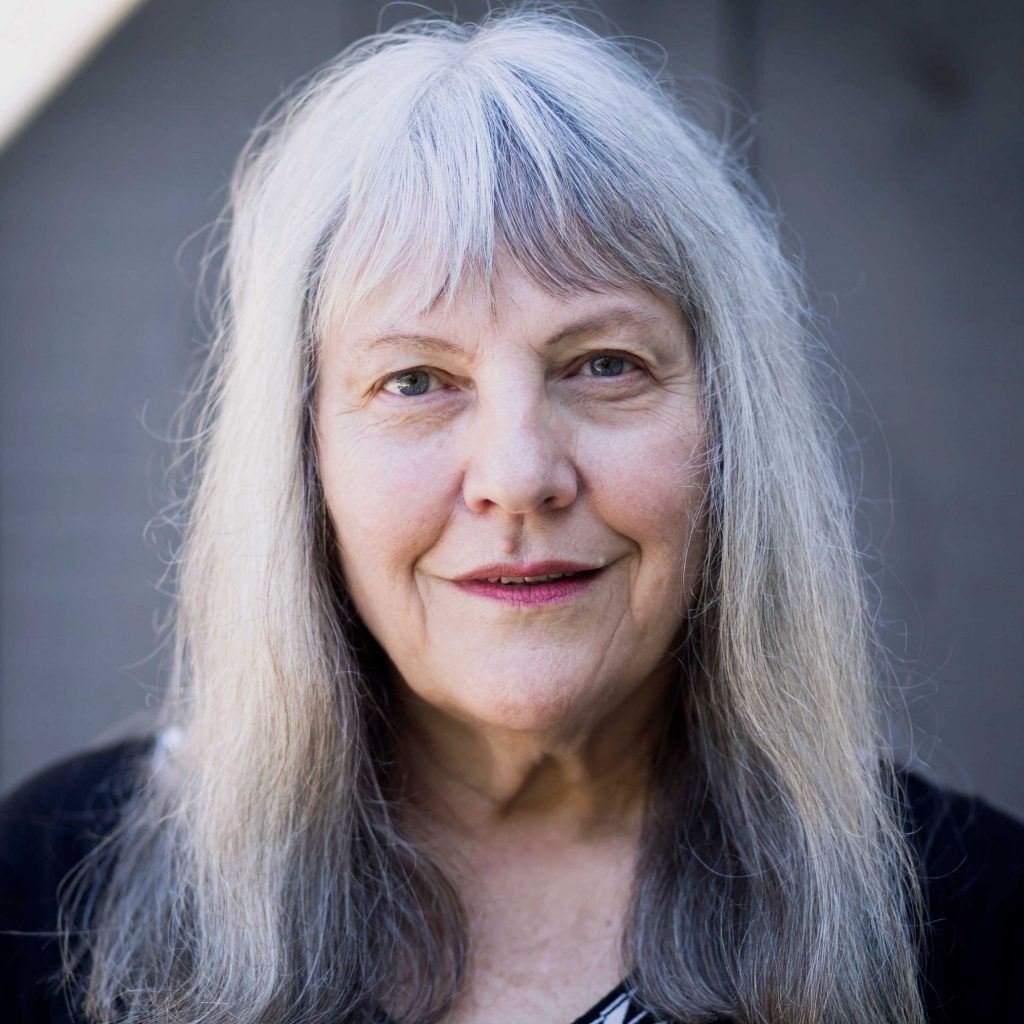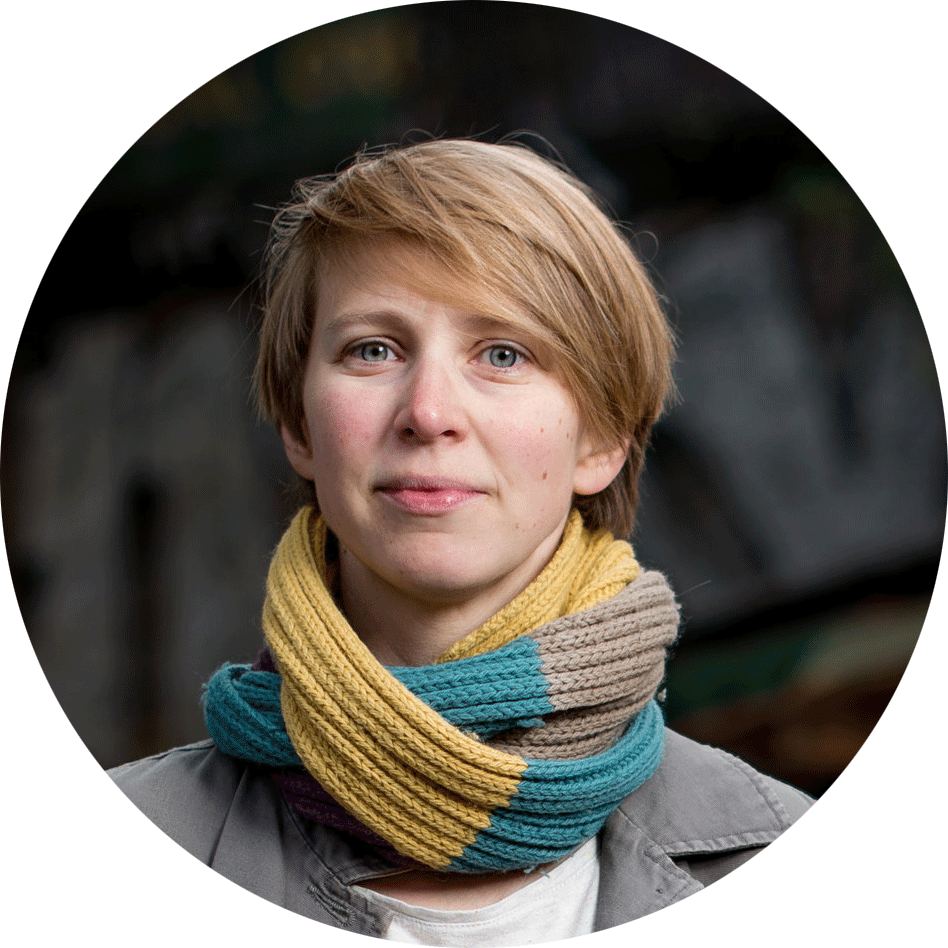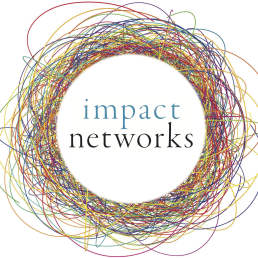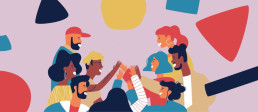From Learning to Doing
Many years ago I was teaching high school English on a small island in SE Alaska. I asked the class to compare a piece of literature to the story of the Three Little Pigs. Half of the class couldn't do the assignment because they had never heard of the story of the Three Little Pigs. That changed me forever.
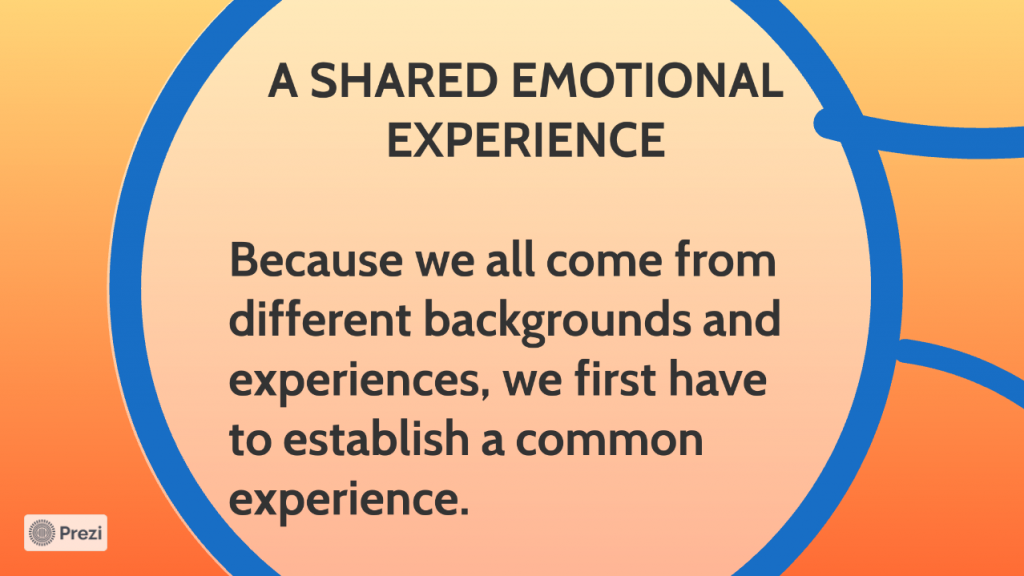
Without shared experiences, learning communities often talk past each other. Inevitably there is a judgement on one side or the other. Each learner brings his/her own experiences to a conversation and uses those unique experiences to make sense of things. Coming together as a learning community to sort through what we understood from something new that is introduced to us is sometimes very frustrating because of all the different experiences brought to the table. To help with that issue in almost any learning community, you can initiate a common experience/action for all participants. When an action is experienced together, suddenly there is more justice in the conversation. The playing field is leveled and the real conversation can begin.
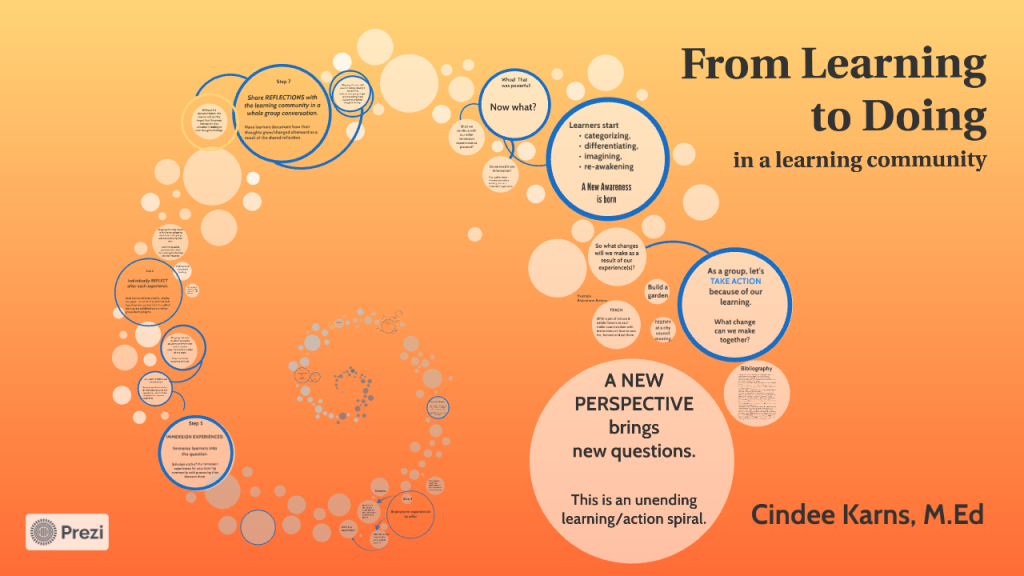
This is a depiction of how that process can be set up for any learning community. The condition is that the learning spiral never ends....every round goes higher, higher. The outcome is that participants almost always feel like they can act on their new knowledge and continue the learning cycle on their own.

Click HERE to access the "From Learning to Doing" resource. A slide presentation on how to create shared experience in a community to initiate actionable change.
Click HERE to access the slide show directly at prezi.com
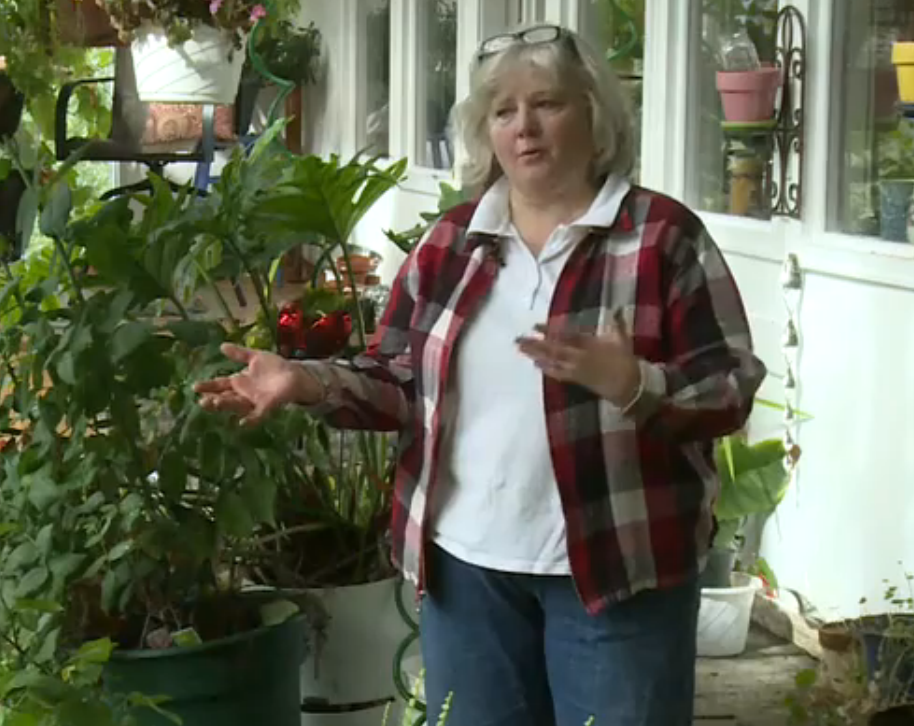
Cindee Karns, a life-long Alaskan, is a retired middle school teacher with a master's in Experiential Learning. She is founder/weaver of the Anchor Gardens Network, which is attempting to bring increased food security to Anchorage. She and her husband live in and steward Alaska's only Bioshelter
Appreciate Network Weaver's library of free offerings and resources?
Donate below or click here
thank you!
MAKING LARGE EVENTS PARTICIPATORY
This blog was originally published in October, 2019, when we couldn’t foresee that most large events would cease. As we anticipate meeting again in person, I hope the approaches here give you ideas. You might like to check out my new meeting design coaching services.
It’s possible to make large events participatory and interactive. Here we share our latest inspiration and approaches, from recent work with events from 50 people to over 200 people. The topics and audiences vary, yet the desire to inspire and connect people, enhance learning, build connections, and advance work beyond the meeting is the same. Here’s what goes into our secret sauce for creating a participatory, inspiring event:
Participation starts in design: Working with a design team that includes representatives of the people who will be participating in the event helps ensure the event format is relevant and effective. This group can:
- Bring varied perspectives to clarify the context and conversations that are needed now. For example, with a state-wide food network that’s been underway for five years, we landed on this strategic question: How can the structure and approaches of the network galvanize and support action and momentum at the local, regional, and state levels? It took some thinking and conversation to get clear that this was the most powerful question for this moment. We brought in case studies to spark the conversations.
- Provide input on the format of the meeting and who to invite and how, e.g., you can access the broader social and professional networks of those in the room to learn about other people, organizations, and initiatives who could be invited.
- Serve as ambassadors for the vision and the meeting/initiative, spreading the word, helping with invitations, and sharing feedback they are hearing.
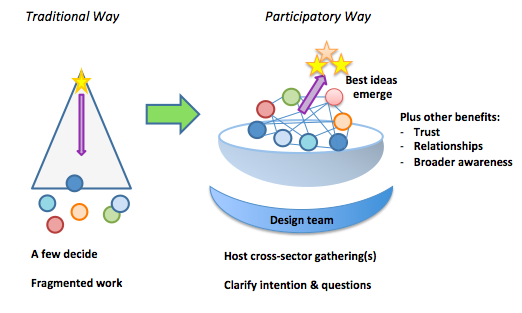
For example, we co-facilitated the annual meeting of the Greater Nashua Public Health Network, with a focus on building a trauma-informed community. The design team helped us get a sense of how much training had been done so we could tailor the content of the training portions. We agreed on a clear set of desired outcomes and went through several rounds of an agenda design, tailoring and improving it each time, based on their feedback.
At the event, start with stories: Getting people sharing stories early in the day builds relationships and creates a warm, welcoming environment. Our approach is inspired by an exercise called Radical Acceptance, which I learned from taking improv classes with Boynton Improv Education in Portsmouth, NH. This simple exercise builds a sense of emotional safety and encouragement for everyone to speak up. I modified it slightly by doing the following:
- At round tables, invite each person to introduce themselves and share one brief story of something going well in their work. Invite everyone to respond with a “yes!” or any other enthusiastic positive response. Then the next person goes and the group does the same. Across the room you hear “yes!” and clapping and laughter, and see fist bumps.
- In another variation at the Nashua meeting, we asked each person to share one thing they appreciate about Nashua/the region and put it on a post it note. We used the same process I mentioned and then collected these and had a graphic facilitator make a poster of the themes.
This only takes 10-15 minutes. Sometimes people pick up on the “yes!” and bring that positive response into other parts of the day, often with a shared laugh.
Offer inspiration/new ideas and new voices: Beyond the standard keynote presentations and skill-building workshops, consider having shorter TED-talk type or PechaKucha presentations (presenter has about 7 minutes to talk with 20 image slides) and featuring voices beyond “experts,” e.g., youth, those with lived experience, people from marginalized identities or communities.
Host cross-pollinating small group conversations: The World Café process taps the ideas of everyone in the room and allows people to make new connections and learn from each other. At an anti-racism gathering of 200+ people from Maine, New Hampshire, and Vermont, we invited people to talk in a group of four with people from their state about what is working in anti-racism work. In the second round, they mixed to a new group of four with people from other states, sharing themes from the previous conversation, and then talking about what more was needed. With 200 people, this meant we had 50 four-person conversations each round (100 total), which is a lot of learning and information exchange…and fertile ground for new relationships and collaborations to form.
Allow space for self-organized deeper dive conversations: All of the conversations and ideas percolating through the first part of an event can be given a space to land and deepen if you design space for that. Inspired by the process of Open Space, here’s an example of how we organized this at the event with 200 people:
- During the morning sessions, we asked people to submit topics they’d like to discuss with others at an Open Space/deeper dive conversation session that afternoon.
- Over lunch, we grouped these into about 16 overall topics. I made folded table tents with a table number and name of the topic and put these out on the round tables. I sketched a chart showing table numbers and topics, took a photo, and put it up on a slide.
- When that session began, I invited people to join the topic they’d like to discuss and walked around with a roving microphone to introduce the topics and show which table was where, with the slide image as another guide.
- We asked for a note-taker at each table. For topics where lots of people showed up, we invited them to split into several tables. At the end, we heard brief highlights from the table conversations.
At another event, we had time for people to rotate to a second topic table, while some people stayed at the first one, building in another layer of connection and cross-pollinating.
The range of topics that were suggested were far beyond what our design team would have thought of, and we learned which areas had the most interest. People had the freedom to initiate or join conversations and connect with others with similar ideas, concerns, and questions.
I wish I could somehow visualize and learn all the seeds that got planted at these events. We offered the fertile ground – so time will tell what grows!
Beth Tener is a leadership trainer and coach who helps social change leaders live their values as they address complex challenges, such as transitioning to a clean energy economy, disrupting racism, and revitalizing communities. She is passionate about bringing people together in ways that unlock and ignite personal, group, and community potential. She is the founder of New Directions Collaborative, based in Portsmouth, NH, and has worked with over 200 organizations and collaborative networks.
originally published at New Directive Collaborative
featured image found here
Seeing the World Through a Network Lens
June Holley offers Network Weaving Workshop, another training slide deck for use in your organization or network. It provides an introduction to many network concepts and includes a number of activities such as speed networking, mapping your network, and the Network Weaver Checklist.
This slide deck is particularly good for sets of organizations who are not well connected. As result of this session, they would be starting to see the world through a network lens.
The slides are offered in pdf format, but we are also sharing a link to the google slides. Create a copy of the presentation and save it as a new name in your google drive. This way, you can modify them to adapt the presentation to the particular group you are working with.
Access the Network Weaving Workshop slide deck HERE.
June Holley has been weaving networks, helping others weave networks and writing about networks for over 40 years. She is currently increasing her capacity to capture learning and innovations from the field and sharing what she discovers through blog posts, occasional virtual sessions and a forthcoming book.
featured image found HERE
Governance – the overlooked route to transformation: How can we best organise for change?
What are the current governance approaches and ways of organising that are being used in attempts to create systems change? What would more systemic governance approaches for our work look/feel like and how might we transition to these?
Part one in a series of four exploring the future of how we govern and organise. Co-written by Sean Andrew, Louise Armstrong and Anna Birney
“Every attempt to write a new human story converges upon just one mundane, heartbreaking problem: How shall we come together, work together, create together? How shall we organise?”
Nilsson, Paddock and Temmink, 2021, Changing the way we change the world (Draft manuscript)
At the heart of change is how we think, relate and act. While these ways of being weave in and throughout our ordinary everyday experiences, they are not always given the intention and continuous attention they need. We believe how we relate, work together, and organise are cornerstones of change making. How we find ways to bring awareness to these elements really matters, and is easier said than done. They need just as much attention as the structural shifts that are required in the coming decade.
With this in mind, we are exploring governance as the place of untapped potential that can enable transformation today and into the future.
We’re defining governance as: The forms, structures and social processes that people and institutions use to create and shape their collective activities.
As such, we, and many others we’re working with and are inspired by (Beyond the Rules, The Hum, Reinventing Organizations, Going Horizontal, Practical Governance, Organization Unbound, Lankelly Chase, Shared Assets, Patterns for Change, Leadermorphosis and Barefoot Guide Connection, to name a few) are calling for governance approaches that reflect systemic principles that are suited for complex adaptive systems. Many of those we’ve listed are experimenting with elements of this, each adapting these to their contexts like Transition Movement and their shared governance approach, or CIVIC SQUARE, who are applying their mission and values into the organisational structures and processes – from how they do recruitment through to how they do financial planning.
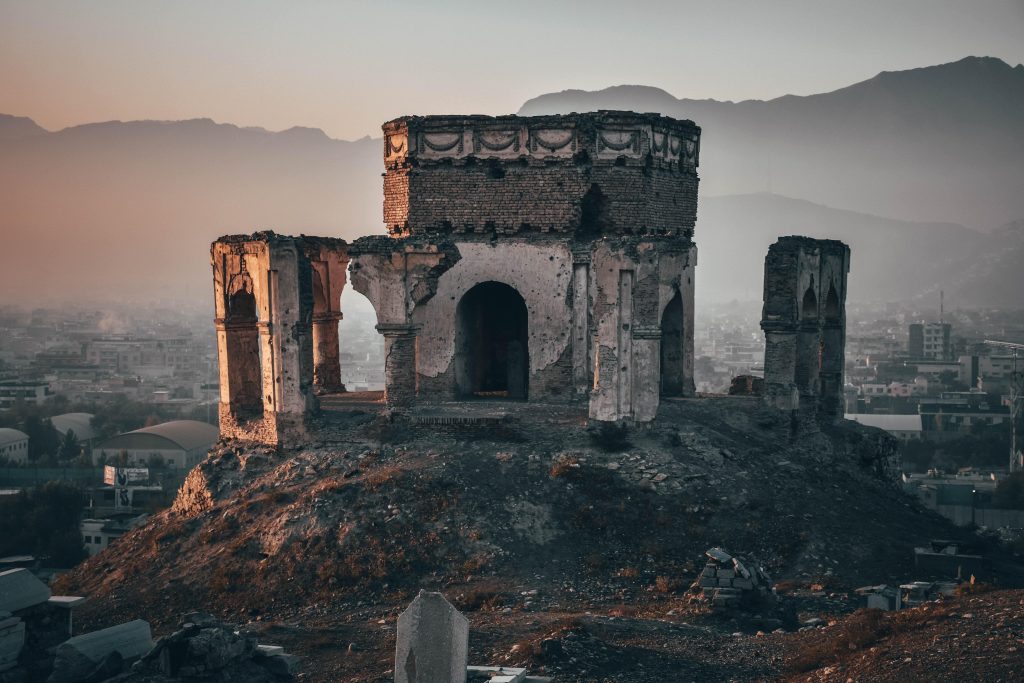
We’re increasingly noticing internally, through our own organisational experience at Forum for the Future, and through our systems change strategy, collaboration and coaching work with others, that many of us subscribe to dominant forms of governance that are designed for a complicated, not complex world. We’ve noticed that sometimes, without intention, our own patterns of organising and those of many of our partners are perpetuating the structures, dynamics and patterns we are trying to shift. For example, we take centralised or hierarchical decision making approaches even though we want to enable greater ownership over a project which can come through taking advice-based decision making approaches where those closest to the challenge are part of the process.
Systemic governance on the other hand enables self-organisation (how a group of people organises their time, attention and resources in ways that meet the urgent necessity of the moment). It cultivates the emergent practices (and enables new system patterns) that help us align to regenerative and distributive approaches that better mimic our living systems.
Our inquiry into governance
After exploring new forms of organising, over the last 18 months at Forum we have been exploring two governance inquiry questions:
- What are the current governance approaches and ways of organising that are being used in attempts to create systems change?
- What would more systemic governance approaches for our work look/feel like and how might we transition to these?
To respond to these questions, we’ve been reflecting on our own organisational life while also learning from current and past collaborations we’ve convened or participated in over the past decade.
What is governance?
So how do people understand governance in their context? Through our inquiry we found that peoples’ understanding and expression of governance varied and was even sometimes quite vague. While governance meant different things to people, depending on their role or context, the people we spoke to talked about it in a few distinct ways, the ‘elements of governance’.
Elements of systemic governance
Systemic governance has both soft and hard elements.
Part of the reason why we tend to think of governance as a fixed process is that we often associate it with a few rigid components. From this exploration we realised that governance is in fact made up of a whole spectrum of elements, which while distinct, together create a unique governance context you may find yourself within, be that in an organisation, a movement, a collaborative endeavour, a community or really any place where people come together to organise something. By naming a spectrum of elements it expands the view of what governance is and how these parts form a tapestry.
We’ve created the figure 8 (below) as a summary of what we’ve heard, recognising that one way of distinguishing these elements is looking at the ‘hard’ or ‘soft’ elements. While the hard and soft elements can sometimes feel in tension with each other – they are in fact interdependent and together they form part of the governance landscape we have to traverse together;

In reality – we recognise these elements can be interchangeably hard/soft and are in symbiosis. Some will be visible and explicit and others invisible and implicit, depending on the context and people’s experience. For example, a “hard” element such as finance might actually be very hidden in an organisation without financial transparency or a “soft” element such as communication and transparency might be experienced overtly as lacking and be a visible gap in ways of working.
Innovating the hard and visible elements of governance
Most of the governance approaches we explored focused on the hard and often more visible, explicit structural elements of the organisation. These seemingly felt easier to figure out with clear problem > solution tactics. For these hard, visible structural elements of governance, people talked about inherited “best practices” that often took the form of compliance protocols. When working systemically, challenges can come when the ‘hard’ or ‘visible’ parts of governance are too rigid and fixed. We found that people working on complex challenges were often bound by these constraints and were yearning for ways to disrupt, reimagine, and innovate these ‘hard’ elements.
One hypothesis we are working with is that the hard stuff (the what) can be a transitory tool and a trojan horse for prioritising the soft stuff (the how).
The soft, invisible elements are the hardest part of governance to shift
The “soft” elements of governance are the implicit less formal cultural components of how people relate and organise. It’s often less tangible and thus harder to shift. Systemic governance is a constant practice of probing, sensing and responding to the dynamic nature of these elements in changing contexts. We found that these elements are too often submerged and therefore if we want to develop resilient adaptable governance approaches we need to bring to the surface and made explicit the soft cultural elements. While these elements are often deprioritised as they are unseen, they are still aspects of governance that materially impact the lived experience of people working within different organising forms.
Why is it so hard to work with the softer issues? The nature and quality of our relationships is the foundation of any governance. Questioning, challenging and reconfiguring established relationships is hard. It can take difficult conversations and processes to bring in different perspectives and overcome unhealthy power dynamics. Bringing self-awareness, paying attention to relational dynamics, creating space to listen and honestly share and transparent communications are the starting points.
Reframing governance as a journey
We heard people thinking about governance as putting structures and processes in place and thinking the rest will follow. Any of the words and connotations people mentioned pointed to governance as something that is fixed and hard, a static thing you set up on a one-off basis when in fact governance approaches are alive, can be enabling and need to be seen as a constantly evolving journey. We’ll explore some more of these governance myths in the next blog piece.
Sign up for the newsletter to get the next blog piece directly to your inbox.
Governance as an overlooked intervention or leverage point for change
These elements of governance play out in all of the many ways when we come together – be that in a multi stakeholder collaboration, across teams or functions in a large organisations, in communities, within networks or distributed movements. Governance is central to any form of organising or organisation creating change. We need to support others to imagine and implement new governance approaches that demonstrate and model how we can operate systemically, as a fractal of the change we are cultivating in the world.
What next?
We offer this figure 8 framework as a way to open up a different conversation about governance and acknowledge it is just one framing. We’d love to know if this resonates with your experience and how the challenges of hard and soft elements play out for you?
We’ll be writing two more pieces in this series. One to explore some of the governance myths we’ve been uncovering through our inquiry (e.g. governance helps us control things). And a second to dig deeper into some of the core systemic governance elements you might start to pay attention to now as critical yeast to influence your organisational practices and experience.
In 2021, we’re starting to explore some of these ideas with fellow travellers who have similar experiences in their context. If these ideas resonate with you or you want explore them more – get in touch with Sean s.andrew@forumforthefuture.org or Louise l.armstrong@forumforthefuture.org
Background context
At Forum for the Future, our governance inquiry is one of our three live inquiries (power, governance, regenerative) we’ve been exploring over the last 18months. This inquiry approach supports our aspiration to be a learning organisation that keeps questioning the assumptions nested in our purpose and supporting structures, processes and practices. Our belief is that these inquiries are helping us continuously become a system-changing organisation that is using our own experience as a site of learning, and as an expression of the change work we’re trying to do in the world. This inquiry has been greatly inspired and supported by those in the field who have been, and are, experimenting with ideas and approaches to governance. This piece is part of our ongoing Future of Sustainability series. In 2021 we’re exploring the narratives and practical interventions needed for transformation in the coming decade.
Read next:
- Exploring transformational governance together Governance can be transformational. When we set our sights on changing the world, we also know that governing well goes beyond preparing our own organisation, network or movement for the future. How do move beyond tweaking the way things currently work and apply governance to transform the ‘systems’ that operate in our society that maintain injustice, oppression and inequality (such as race, patriarchy and class)? (PART 2/4)
- Reimagining governance myths Part three in a series of four exploring the future of how we govern and organise. This piece looks at how people think governance happens today and challenge five commonly held governance myths. (PART 3/4)
- The governance flywheel In this final installment of our series on governance, we introduce the “governance flywheel”1 which highlights three fundamental linked areas that if they are deliberately seeded and nurtured, individually and together, can create the momentum needed to cultivate and grow healthy governance systems. (PART 4/4)
Originally published at Forum for the Future
An enabling, empathetic and courageous leader. I questions and challenges the way things are done, models what is possible and enable others to do that too. Sees potential and nurtures it in people and ideas. Living change while knowing how to strike how to strike the balance between adventure, rest, work and care and nurturing.
For another way of thinking about governance alternatives see Resonance Network's post and media toolkit : THIS IS HOW #WEGOVERN
The Web of Change
Creating Impact Through Networks
The following post is excerpted from the introduction of Impact Networks: Create Connection, Spark Collaboration, and Catalyze Systemic Change, now available in print, as an audiobook, and as an ebook.
“We are caught in an inescapable network of mutuality, tied in a single garment of destiny. Whatever affects one directly, affects all indirectly.”
— Martin Luther King Jr., Letter from a Birmingham Jail
Since the beginning of our species, humans have formed networks. Our social networks grow whenever we introduce our friends to each other, when we move to a new town, or when we congregate around a shared set of beliefs. Social networks have shaped the course of history. Historian Niall Ferguson has noted that many of the biggest changes in history were catalyzed by networks—in part, because networks have been shown to be more creative and adaptable than hierarchical systems.[1]
Ferguson goes on to assert that “the problem is that networks are not easily directed towards a common objective. . . . Networks may be spontaneously creative but they are not strategic.”[2] This is where we disagree. While networks are not inherently strategic, they can be designed to be strategic.
When deliberately cultivated, networks can forge connections across divides, spread information and learning, and spark collaborative action. As a result, they can “address sprawling issues in ways that no individual organization can, working toward innovative solutions that are able to scale,” write Anna Muoio and Kaitlin Terry Canver of Monitor Institute by Deloitte.[3] Networks can be powerful vehicles for creating change.
Of course, networks can have positive as well as negative effects. Economic inequality and the advantages and disadvantages of social class, race, ethnicity, gender, and other aspects of individual identity are in large part the result of network effects: certain types of people form bonds that increase their social capital, typically at significant social expense to those in other groups. Much of the world has become acutely aware of the harmful network effects arising from social media and the internet. This includes the proliferation of online echo chambers that feed people what they want to hear, even when it means rapidly spreading misinformation.
In our globally connected and interdependent society, it is imperative that we understand the network dynamics that influence our lives so that we can create new networks to foster a more resilient and equitable world. The choice in front of us is clear: either we can let networks form according to existing social, political, and economic patterns, which will likely leave us with more of the same inequities and destructive behaviors, or we can deliberately and strategically catalyze new networks to transform the systems in which we live and work.
A case in point is the RE-AMP Network, a collection of more than 140 organizations and foundations working across sectors to equitably eliminate greenhouse gas emissions across nine mid- western states by 2050. From the time it was formed in 2015, RE-AMP has helped retire more than 150 coal plants, implement rigorous renewable energy and transportation standards, and re-grant over $25 million to support strategic climate action in the Midwest. RE-AMP’s work is necessary in part because other powerful networks are also at play to maintain the status quo or to enrich the forces that profit from pollution and inequality.
We can look to the field of education for another example of a network creating significant impact. 100Kin10 is a massive collaborative effort that is bringing together more than three hundred academic institutions, nonprofits, foundations, businesses, and government agencies to train and support one hundred thousand science, technology, engineering, and math (STEM) teachers across the United States in ten years. Founded in 2011, 100Kin10 is well on track to achieve its ambitious goal and has expanded its aim to take on the longer-term systemic challenges in STEM education.
The Justice in Motion Defender Network is a collection of human rights defenders and organizations in Mexico, Guatemala, Honduras, El Salvador, and Nicaragua that have joined together to help migrants quickly obtain legal assistance across borders. Throughout the ongoing family separation crisis created by US immigration policies during the Trump administration, this network has been essential in locating deported parents in remote regions of Central America and coordinating reunification with their children.
Or consider a network whose impact spans the globe, the Clean Electronics Production Network (CEPN). CEPN brings together many of the world’s top technology suppliers and brands with labor and environmental advocates, governments, and other leading experts to move toward elimination of workers’ exposure to toxic chemicals in electronics production. Since forming in 2016, the network has defined shared commitments, developed tools and resources for reducing workers’ exposure to toxic chemicals, and standardized the process of collecting data on chemical use.
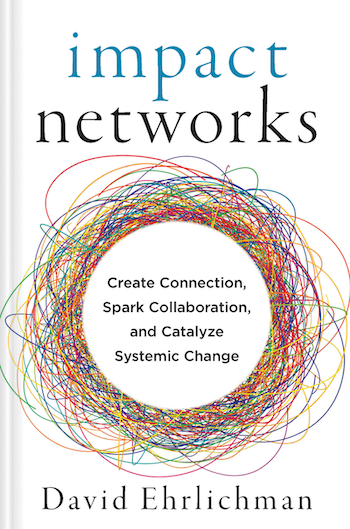
Networks like RE-AMP, 100Kin10, the Defender Network, and CEPN—along with many others you will learn about in this book—were not spontaneous or accidental; rather, they were formed with clear intent. These networks deliberately connect people and organizations together to promote learning and action on an issue of common concern. We call them impact networks to highlight their intentional design and purposeful focus, and to contrast them with the organic networks formed as part of our social lives.[4]
We think of impact networks as a combination of a vibrant community and a healthy organization. At the core they are relational, yet they are also structured. They are creative, and they are also strategic. Impact networks build on the life force of community—shared principles, resilience, self-organization, and trust— while leveraging the advantages of an effective organization, including a common aim, an operational backbone, and a bias for action. Through this unique blend of qualities, impact networks increase the flow of information, reduce waste, and align strategies across entire systems—all while liberating the energy of multiple actors operating at a variety of scales.
All around the world, impact networks are being cultivated to address complex issues in the fields of health care, education, science, technology, the environment, economic justice, the arts, human rights, and others. They mark an evolution in the way humans are organizing to create meaningful change.
To learn more about what impact networks are, how they work, and what it takes to cultivate and sustain them, check out the new book Impact Networks: Create Connection, Spark Collaboration, and Catalyze Systemic Change.
[1]: Niall Ferguson, The Square and the Tower: Networks, Hierarchies and the Struggle for Global Power (London: Penguin Books, 2018), xix.
[2]: Ferguson, The Square and the Tower, 43.
[3]: Anna Muoio and Kaitlin Terry Canver, Shifting a System, Monitor Institute by Deloitte, accessed December 17, 2020, https://www2.deloitte.com /content/dam/insights/us/articles/5139_shifting-a-system/DI_ Reimagining-learning.pdf.
[4]: June Holley has called them “intentional networks” in Network Weaver Handbook: A Guide to Transformational Networks (Athens, Ohio: Network Weaver Publishing, 2012). Peter Plastrik, Madeleine Taylor, and John Cleveland have called them “generative social impact networks” in Connecting to Change the World: Harnessing the Power of Networks for Social Impact (Washington, DC: Island Press, 2014).
Originally published at Converge
David Ehrlichman is a catalyst and coordinator of Converge and author of Impact Networks: Create Connection, Spark Collaboration, and Catalyze Systemic Change. With his colleagues, he has supported the development of dozens of impact networks in a variety of fields, and has worked as a network coordinator for the Santa Cruz Mountains Stewardship Network, Sterling Network NYC, and the Fresno New Leadership Network. He speaks and writes frequently on networks, finds serenity in music, and is completely mesmerized by his newborn daughter.ehrlichman@converge.net
From Learning to Doing
How do more of us help create a world that is good for all of us? Many of us have been attending at least a few of the hundreds of enticing webinars that have been available during the last pandemic year, but somehow have not been able to actually apply what we have learned in our communities.
The first challenge has been that most of these webinars are what I call “talking heads:” one individual or a panel of experts share new ideas with us for the entire session. At the end we may realize that we have a million questions and have no idea how we might proceed. But we immediately move back into our workflow and the memory of the webinar content quickly fades.
I’ve even been part of sessions that are more interactive, where we are put into breakout rooms after the presentation and have a chance to reflect on the information provided. But somehow this, too, is not quite enough.
As a result, I thought about times when I , or people I knew, had actually managed to apply a new idea to their community. The very crude chart (would love some graphics assistance on this!) below shows that there are many small steps that need to be taken (and supported by capacity builders) for learning to move to doing.
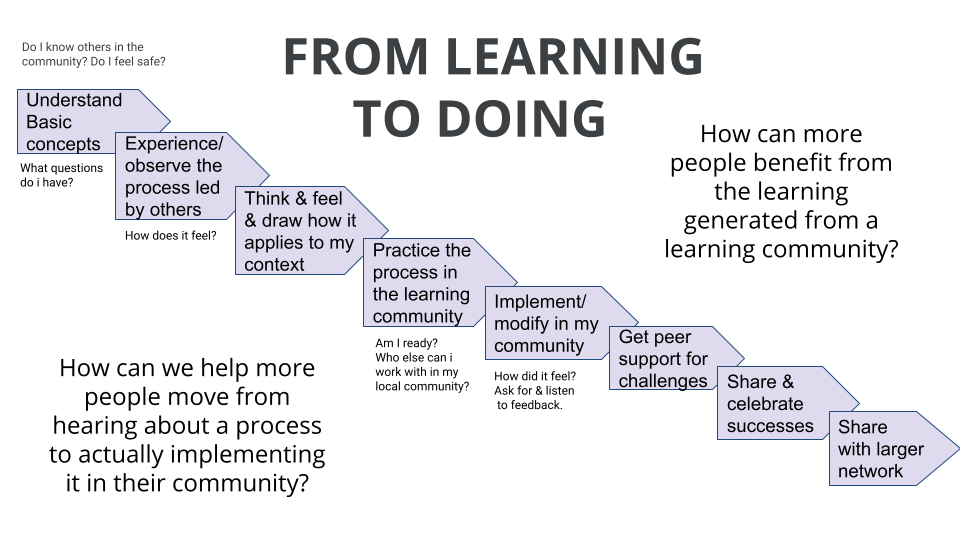
Let’s go through the steps:
Create a learning community.
First, I think learning communities are the best place to be introduced to new ideas. A learning community is simply a group of people (using zoom such groups could actually be very large if good use is made of breakout rooms) who commit to meeting regularly (usually monthly) to support each other’s learning and doing. It’s wonderful if you can have skilled, paid facilitation of such a group but they work amazingly well with informal groups who share the facilitation role. Most learning communities have some sort of focus to their learning, i.e. they may be people who want to learn more about systems strategies or network weaving or food access.
An important part of successful learning communities is that people in them feel safe to share their concerns or challenges. This means that learning community facilitators will need to include relationship building activities in every session where people get to know each other more deeply.
Hear information about a new process, skill or strategy and have space to ask questions and reflect.
I have found that listening to something new is often overwhelming, so I recommend that presenters limit their talk to 10-15 increments. If the topic is complex, you might want to have two 10 minute presentations each followed by a breakout session of 5 minutes. People can generate questions during the breakouts that are captured on a jamboard or Miro board - and answered by the presenter(s) as they are written.
Do a demonstration.
It’s often very useful for presenters to demonstrate the new skill or process with an individual or small group, with the rest of the participants observing.
Practice in the learning community.
The next step is to actually practice the process in the learning community, or in some cases, you may want to set up a smaller popup session for practice.
Thinking/feeling about application.
It’s often useful, especially for introverts, to have some time by themselves processing their reaction to the process. Participants can be encouraged to notice how the process feels to them? Might it be a good fit with their community? Does the process seem hard or simple/ is it scary to think about doing something like this in their community? They can write notes or be encouraged to draw.
You might also give participants time to discuss potential application in a breakout room. Here they might answer questions such as, “How might this work in my community? Who else could work with me on implementing this process? Could I try it first with a small group of people? What is a meeting coming up where I could try this?
Participants then (if they plan to go ahead) make a commitment to try out the process or skill in the coming month.
Applying in your community.
Participants hopefully have worksheets etc to help them take the information back to their community. They also need to be encouraged to find one or two others to work with them on the application. An important part of their planning process needs to be thinking about how the process may need to be modified for their specific context.
An essential part of any process will be to allocate time for the groups’ reflection on the process.
Other worksheets can encourage the facilitation group to spend time after to reflect on the process: what worked well? What would we need to change? What challenges did we encounter that we didn’t expect?
Get peer support for challenges.
When the learning group next meets, ask if anyone experienced any challenges in applying the practice. If there are several, you might want to have each person with a challenge go into a breakout room with others to support them. Then share the peer assist process to help them think how to work with the challenge.
As facilitator, you will need to frame the request for challenges with the importance of seeing challenges as a way to deeper learning. This embracing of so called mistakes is a key part of the mindset shift we all need to make.
Celebrate successes and harvest to share with other networks.
Encourage one or two participants to share successes they had with the process - encourage them to share pictures to make their success come alive for others.
You may want to facilitate a knowledge harvesting process. Some people have had success using jamboard, Miro or a google doc where everyone can add what they learned from implementing the process, suggestions for changes or improvements, key factors for success and so forth. Encourage one or two participants to take this input and craft into a post or handout that can be shared by participants with all their networks and social media connections. They may want to include video snippets of the process or people sharing how useful it was.
Share with other networks.
If the learning community is part of a specific network with a communications ecosystem, encourage the information to be shared through newsletters and social media. You might also want to turn the information into a resource or handout, as we are doing with this blog post!
If there is a good response to the sharing of the information, you might want to set up a popup for others outside of the learning community on how to use the process in their settings.
Big Picture
What is this chart suggesting about training? It’s saying that if we want our training to lead to change in communities, we need to reconceptualize training to make it more interactive and supportive of all the steps that are needed to move from learning to doing. We will get so much more impact if we shift the emphasis from content (and this is very hard because we as teachers, presenters and experts almost always LOVE our content and feel people need to have access to every bit of it! You can still share a longer video or article with participants so they can dig in deeper) to an emphasis on support for application of new practices.
Next steps
I would love for people to comment on this article, add additional ideas, edit it - in other words, make it better! Please just click on this link and it will take you to a google doc where you can comment or edit. This blog post can be so much better with your thoughts added. Once we have collected and edited those new thoughts, I’ll revise this blog post.
I’d also love to hear how you share this post with others in your networks. Was it useful? Did you take any steps to shift your webinars so they are more interactive?
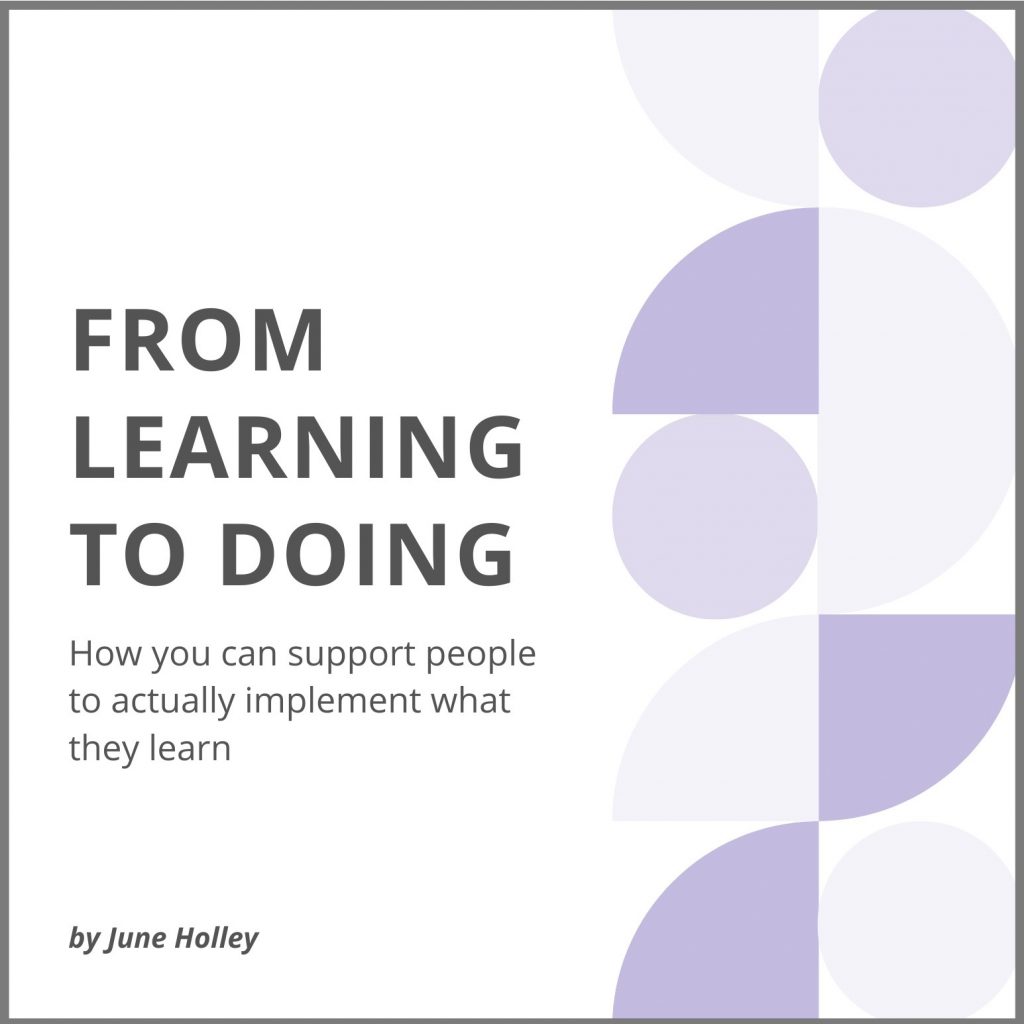
June Holley has been weaving networks, helping others weave networks and writing about networks for over 40 years. She is currently increasing her capacity to capture learning and innovations from the field and sharing what she discovers through blog posts, occasional virtual sessions and a forthcoming book.
featured image found here
PLEASE DONATE to help Network Weaver continue in it’s mission to offer free support and resources to networks worldwide.
SYSTEMS CHANGE & DEEP EQUITY
PATHWAYS TOWARD SUSTAINABLE
IMPACT, BEYOND “EUREKA!,”
UNAWARENESS & UNWITTING HARM
An Interview with Sheryl Petty and Mark Leach
Below is the introduction to the full Systems Change & Deep Equity monograph offered by Sheryl Petty of Movement Tapestries and Mark Leach of Change Elemental.
Available for download here at Network Weaver or directly from Change Elemental’s Website.
Change Elemental chose to offer a monograph to share our thoughts on the inseparability of Systems Change and Deep Equity, given our 40 years as an organization in the systems change, capacity building, and social justice fields. (1) We offer this especially given the proliferation of equity awareness and significantly deeper requests for equity support across the organizational development and movement network fields in the last few years. This expansion in requests for deep, transformational equity support has grown dramatically since the 2016 U.S. presidential election. Now, many more social change organizations and philanthropic institutions are working to deepen their knowledge and capacity around Systems Change and Deep Equity. In our opinion, the combination of these two fields is pivotal and likely the work to do for the next phase of our human evolution if we are to become the societies we hope for in our deepest hearts and visions for just and healthy communities.
The co-authors of this article have 65 years of combined experience in systems change, equity, and organizational transformation. We have worked together on a number of projects for nearly 8 years, sometimes separately and, at times, together in local, national, and international spaces. We have worked across foundations, non-profits, medium-to-large school systems and universities as well as with individuals, institutions, and networks to support leaders, change agents, and groups to deepen their capacity to realize the full potential of their missions and collective dreams. We have observed over the last decade or so in the field of organizational development, the more popular advent of “Systems Change” as a domain of effort that can lead to more comprehensive, lasting, and effective transformation for institutions, communities, neighborhoods, and groups.
Yet, our observation is also that these approaches to “complex systems” are new to some and not so new to others. Here enters “equity.” We have written elsewhere on the dimensions of equity, and refer readers to those pieces. (2) Others of our colleagues have also written extensively across the fields of social justice, organizational transformation, network development, and movement building. (3)
Our purpose in this article is to dispel mythology and to illuminate essential dimensions of approaches to Systems Change intimately connected with Deep Equity. Our perspectives and our experience have shown us that the two are inseparable if they are to be pursued at depth. The degree of healing needed in our world, and in our collective institutions and communities, requires nothing less than depth from us at this time (if less comprehensive approaches were ever appropriate).
We indicate in this monograph what, from our perspective, are the most salient aspects of approaches to Systems Change and Deep Equity combined that can lead and, in our experience, have led to the most profound changes in organizations, local, national, and global communities, networks, and movement building efforts. (We also refer readers to Change Elemental and Building Movement Project’s 2018 webinar on Systems Change and Equity for further grounding in our approaches. (4) )
As we have stated, nothing less than the robustness of complex Systems Change approaches are necessary to solve some of the most intractable situations we are and have been facing for quite some time—socially, environmentally, and economically, in terms of the overall health and well-being of individuals and communities, nationally and globally. We have grown as a species in our ability to be aware of the interconnectedness between so many of our issues and circumstances; this insight is a gift. We are now challenged to take that growth and insight, and apply it at depth with particular attention to our areas of unawareness—i.e., the places we have been ignoring for centuries. It is to these areas that Deep Equity speaks. In fact, Deep Equity, by its very nature, is complex Systems Change.
To put a finer point on these statements: Systems Change pursued without Deep Equity is, in our experience, dangerous and can cause harm, and in fact leaves some of the critical elements of systems unchanged. And “equity” pursued without “Systems Change” is not “deep” nor comprehensive at the level of effectiveness currently needed.
Both need each other. The challenge in effectively combining these domains of practice is that often many systems change actors—particularly those with access to publishing, funding, and other critical resources to achieve depth and scale—do not seem to understand nor are they embedding Deep Equity into their work. Or when “equity” is addressed, it is piecemeal, seems an afterthought, and/or is shallow. Actors pursuing and advancing critically needed systems change efforts often bring limited awareness to address or adequately embed equity. This is the wound we must heal.
We have observed too many times systems change efforts pursued to the neglect of equity, or Deep Equity, despite living in a period where information about equity (and Deep Equity, in particular) is proliferating at an unprecedented rate. Gone are the times when any of us could say, “I couldn’t find any information on it,” “I didn’t know anyone,” or “I didn’t know better.”
We owe it to ourselves and to each other to confront our old habits that are preventing us from creating the most robust, healing, catalytic, life-affirming, and transformative solutions we can develop, and that are desperately needed. Pursuing Deep Equity and Systems Change will require us to squarely address issues of power, privilege, places of unawareness, and the meaning of “depth” in approaches to equity and systems change. It will take bravery and courage, finding out how deep we are really willing to go to help heal and transform this world, committing to the depth that we discover in our exploration, and partnering and complementing each other in ways that may be heretofore unprecedented. (5) (We also refer the reader to a previously published piece from one of the authors on the relationship between these two themes plus “inner work:” “Waking Up To All of Ourselves: Inner Work, Social Justice & Systems Change.” (6) )
This monograph is structured as an interview of Sheryl Petty conducted by Mark Leach, but it is ultimately a dialogue between two long-term Systems Change and Equity actors.
One of us is a soon-to-be middle-aged cisgendered, (7) queer/pansexual, Black woman from Detroit, whose professional career in social justice and Systems Change began in Oakland, CA in educational systems and nonprofits, and branched out into capacity building and systems change with school systems, nonprofits, and philanthropic institutions around the country over the last 25 years. She also has a nearly 25-year inner work practice in African-based and Tibetan Buddhist traditions, in both of which she is ordained and teaches.
The other of us is a well-past middle-aged, cisgendered, white man from Long Island, New York. Based on early experiences in some of the world’s most economically poor countries, he has spent his life trying to understand who gets what, and why, and working with people, organizations, and networks across big differences in identity, wealth, and worldview to tackle big, messy problems of systemic inequity.
Systems Change & Deep Equity is available for download here at Network Weaver or directly from Change Elemental’s Website.
1. Change Elemental was formerly known as Management Assistance Group (MAG). We changed our name in April 2019.
2. For example: Petty, Sheryl. Seeing, Reckoning and Acting: A Practice Toward Deep Equity. Change Elemental, 2016. https://changeelemental.org/resources/seeing-reckoning-acting-a-practice-toward-deep-equity/ ; and Petty, Sheryl and Amy B. Dean. Pursuing Deep Equity. Nonprofit Quarterly, 2017. https://nonprofitquarterly.org/five-elements-of-a-thriving-justice-ecosystem-pursuing-deep-equity/
3. Please see more resources listed in the appendix.
4. Systems Change with an Equity Lens: Community Interventions that Shift Power and Center Race. Change Elemental and Building Movement Project, 2018. https://changeelemental.org/resources/systems-change-with-an-equity-lens-community-interventions-that-shift-power-and-center-race/
5. Petty, Sheryl. “Introduction.” Equity-Centered Capacity Building: Essential Approaches for Excellence and Sustainable School System Transformation. Equity-Centered Capacity Building Network (ECCBN), 2016. https://capacitybuildingnetwork.org/intro/
6. Petty, Sheryl. “Waking Up All Of Ourselves: Inner Work, Social Justice, & Systems Change.” Initiative for Contemplation, Equity, and Action Journal. Vol. 1, No. 1, pages 1-14, 2017. http://www.contemplativemind.org/files/ICEA_vol1_2017.pdf
7. Cisgender is a term used to describe people who identify with the gender assigned them at birth. Source: Words Matter: Gender Justice Toolkit. National Black Justice Coalition. https://www.arcusfoundation.
Featured Photo by Jaccob McKay on Unsplash



